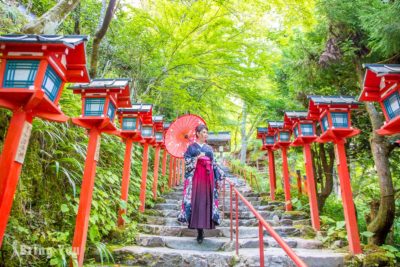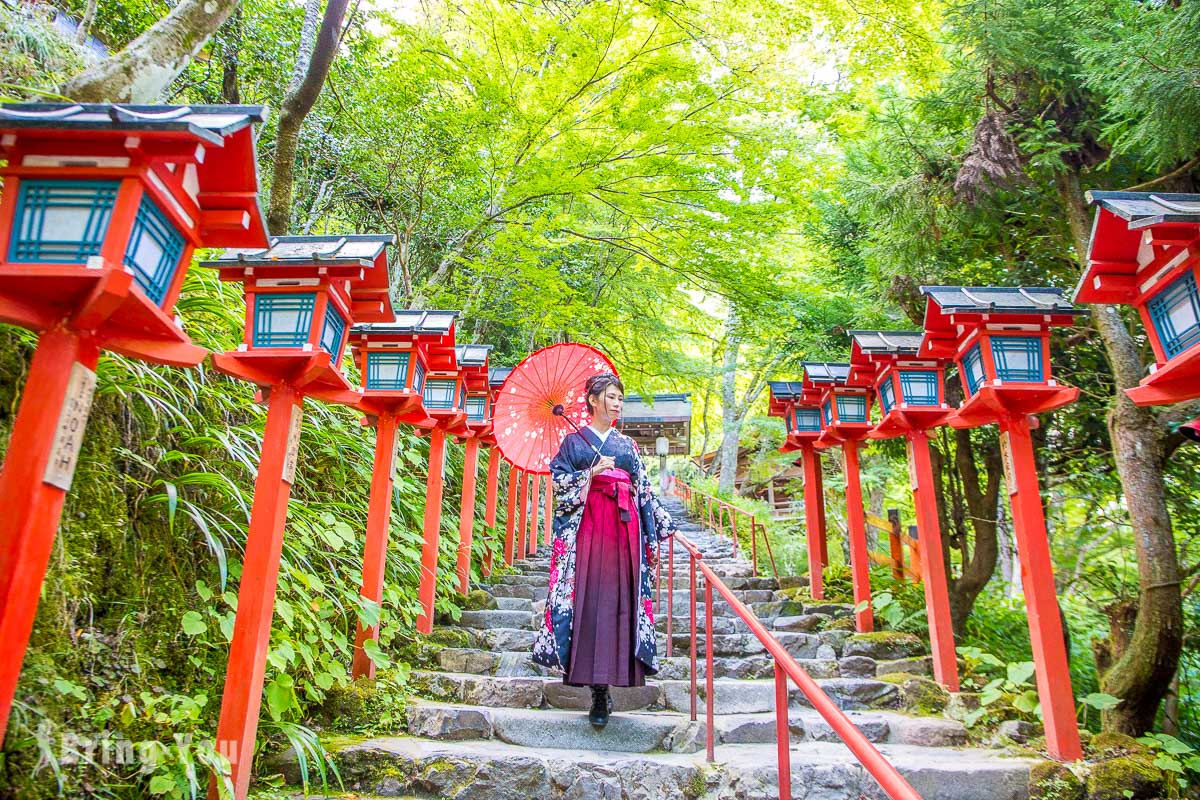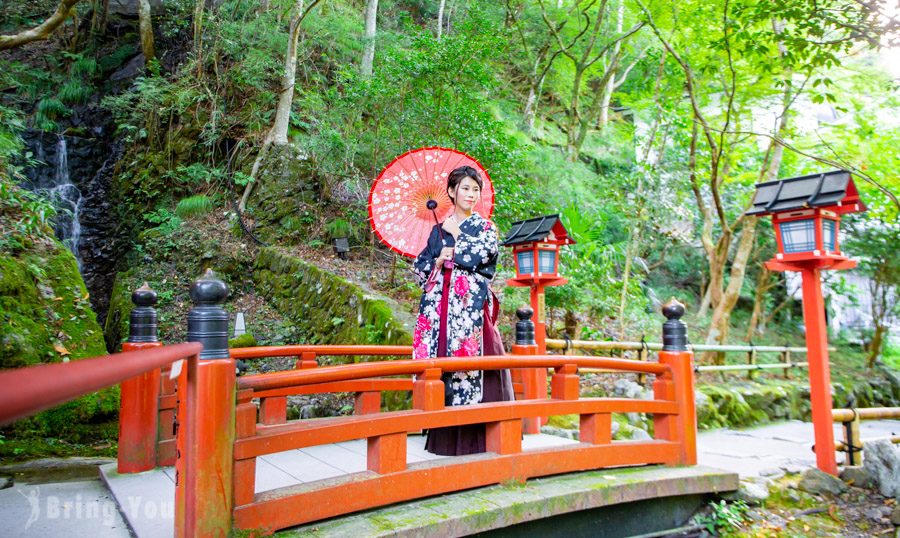
A 30-minute drive away from downtown Kyoto, Kifune-jinja Shrine emerges as an outstanding cultural stop in Kyoto. This historical Shinto shrine dates back to the early Heian period, enshrining Takaokami-no-kami, the Goddess of water. Takaokami-no-kami is believed to appear in the form of a white dragon that nestles behind the Kifune Mountain to protect the water source in Kyoto and nourish the citizens’ livelihood.
Getting to Kifune-jinja Shrine is a breeze. All we needed to do was board the Eizan Electric Railway from the city center of Kyoto, connected to a local bus before taking a short walk to the shrine. As Kifune-jinja Shrine is located on the outskirts north of Kyoto, you can combine it with the nearby Kurama-dera Temple on a day trip. This travel guide to Kifune-jinja Shrine in Kyoto enfolds all of our personal sharing and insights for those who visit Kifune-jinja for the first time!
What to Expect on Your Visit to Kifune-jinja Shrine?
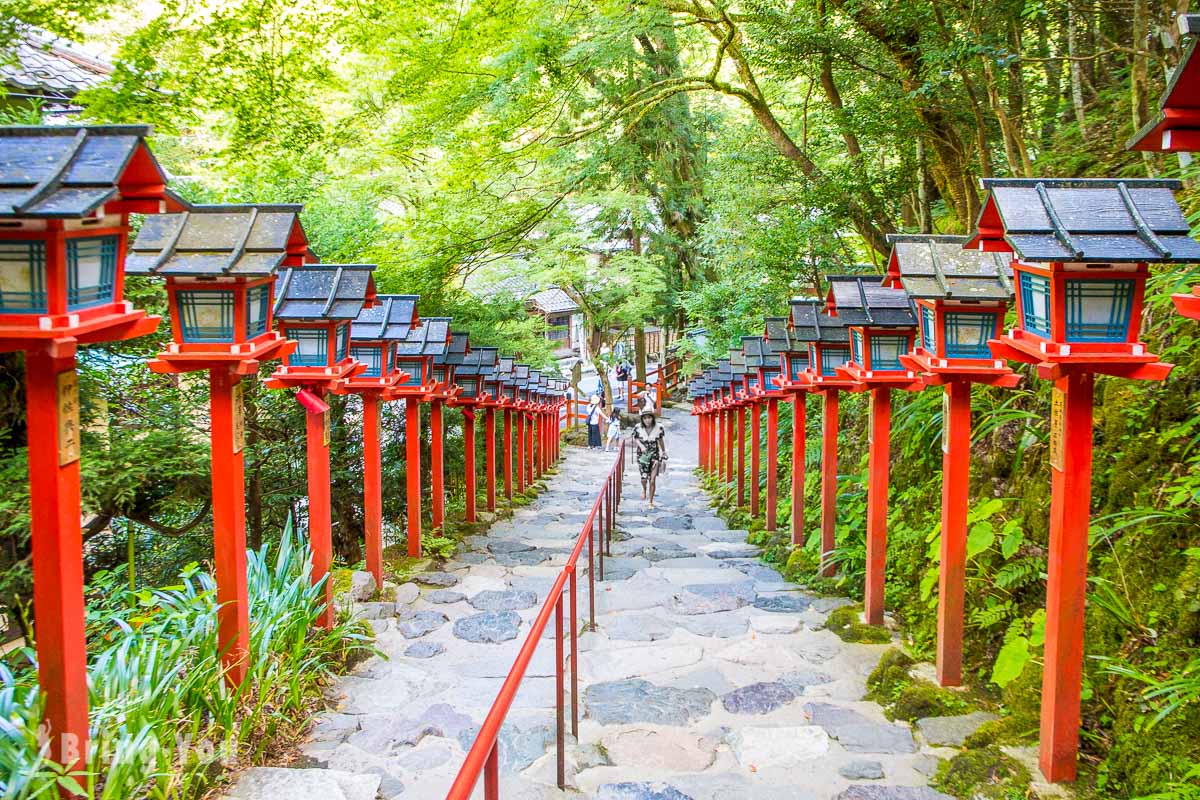
The complex of three praying halls inside the shrine grounds itself team up with the scenic surroundings to provide you with a gorgeous getaway. The entire ground connected with the entrance pathway is spacious, with lots of awe-inspiring stops along the way. Therefore, feel free to take your time to soak up the serene vibe of the place!
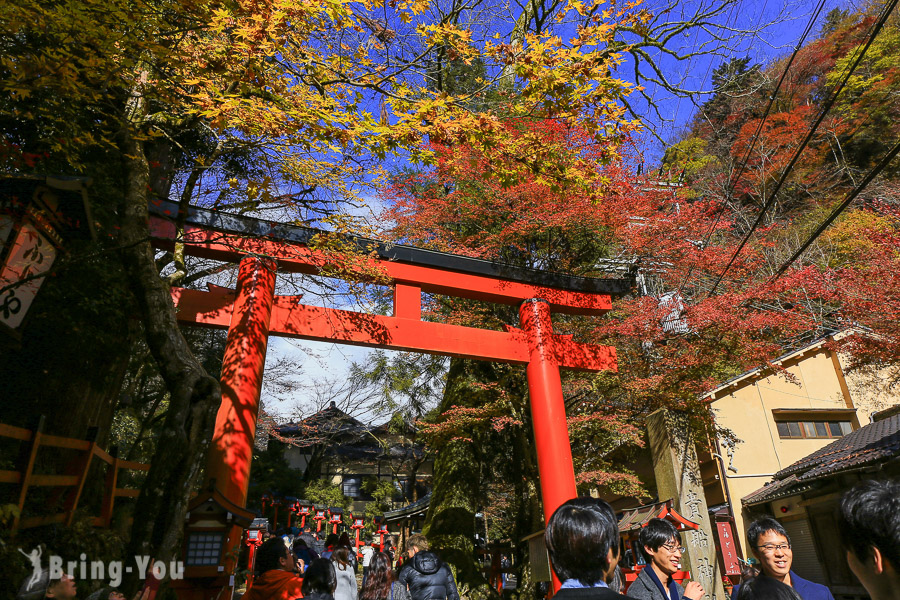
To engage in the spiritual journey of the shrine, you can go ahead to purchase some mizu-ura mikuji which is a fortune-telling slip that includes the usage of the water there. If you dip the paper into the Mizu-ura-yuniwa stream, a source of holy water running around the shrine, the fortune words will appear on the paper.
The locals believe that the stream never stops running, and the Goddess of water tucked inside the water source can see through everything. Therefore, fortune-telling words are believed to be fully accurate.
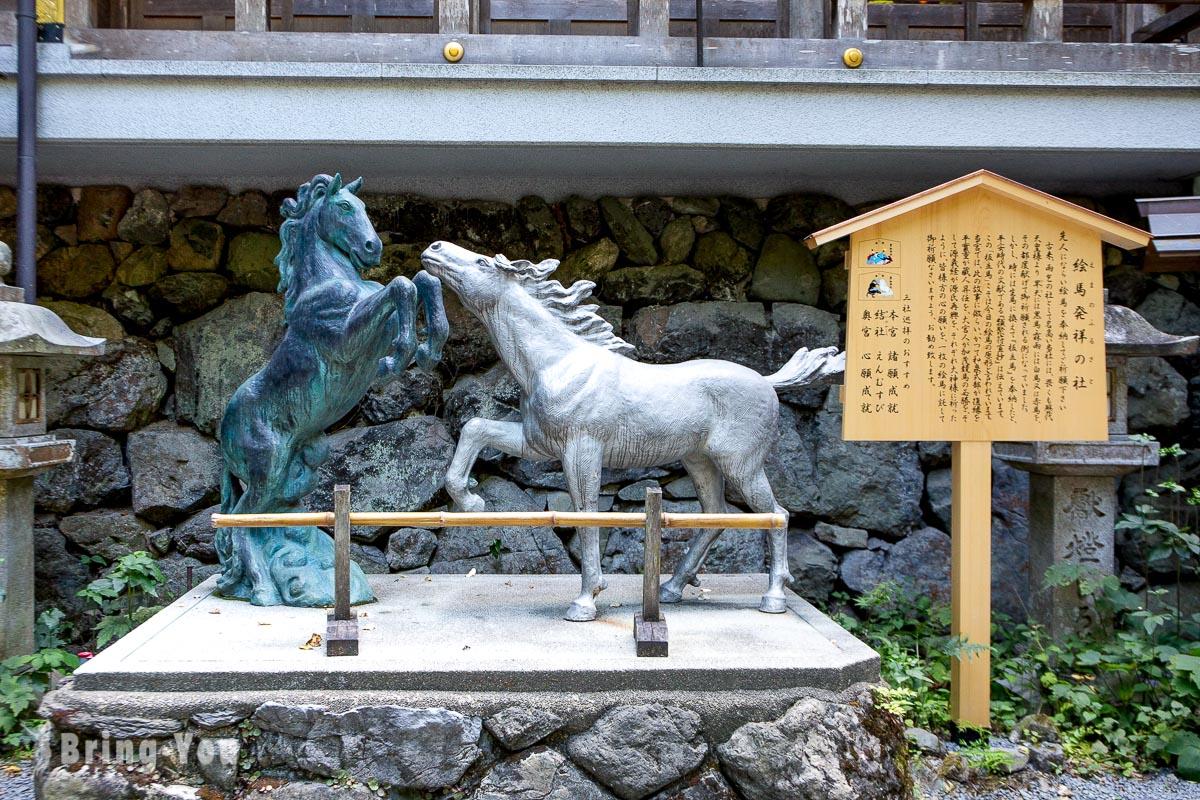
Other than the spiritual stream and the slips, Kifune-jinja Shrine is also the birthplace of ema. Ema is a wooden votive plaque that is widely popular amongst traditional Japanese shrines. The worshippers will express their wishes on each ema before hanging them up at the shrine.
What makes Kifune-jinja Shrine even more special is the fact that you can choose from numerous designs. There’s one with a horse, one with a dragon, and another one with a painting of Izumi Shikibu Heian poet on it.
Now that you have a sneak peek into what it’s like to visit Kifune-jinja Shrine, read on to find out all the tips for getting there, photo-ops, and the best time to visit.
How to Get to Kifune-jinja Shrine from Downtown Kyoto?
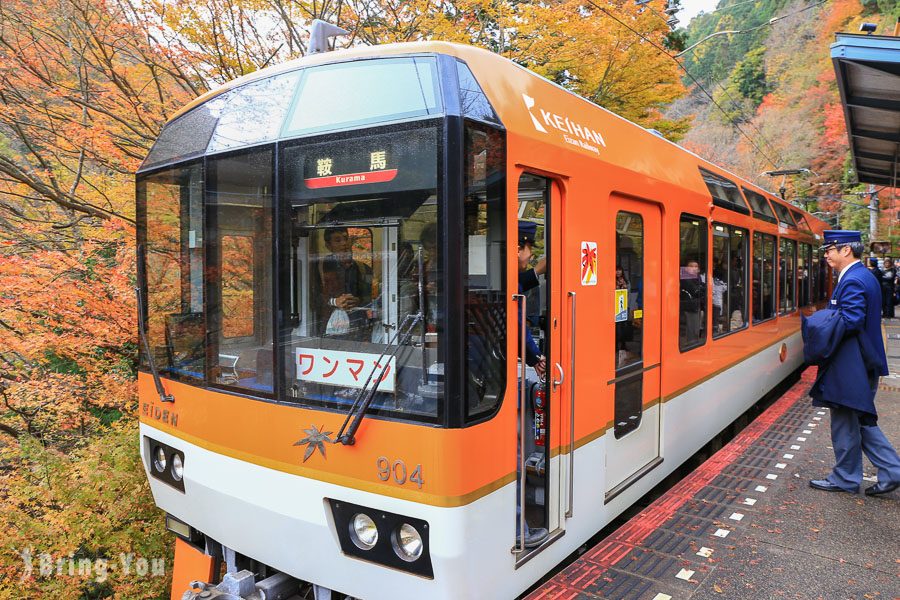
If you’re not part of a tour nor have a chartered car for yourself, you can ride on the Eizan Railway Line combined with a short bus ride to get to Kifune-jinja Shrine.
- No matter where you start, you need to get off at the Demachi-yanagi Station first.
- When you arrive at Demachi-yanagi Station, connect with the Kibune-guchi Station on the Eizan Line for Kuruma in about 28 minutes.
- Once you get off at the Kibune-guchi Station, walk across the street to the adjacent bus stop and wait for bus No. 33 to come.
- This short bus ride is only 5 minutes long to drop you off at the Kifune Station. From there, take a short walk for a few minutes more along a small stream to arrive at the Kifune-jinja Shrine.
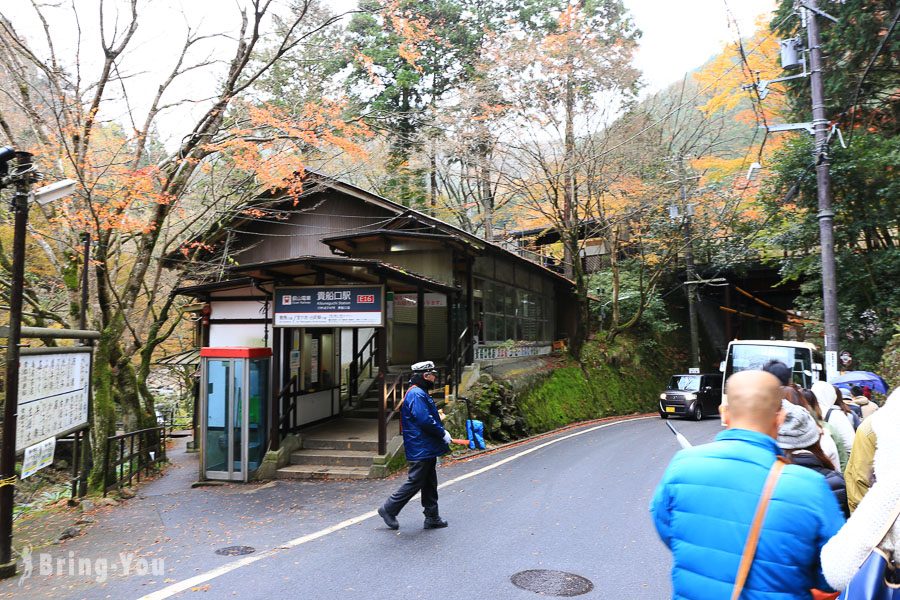
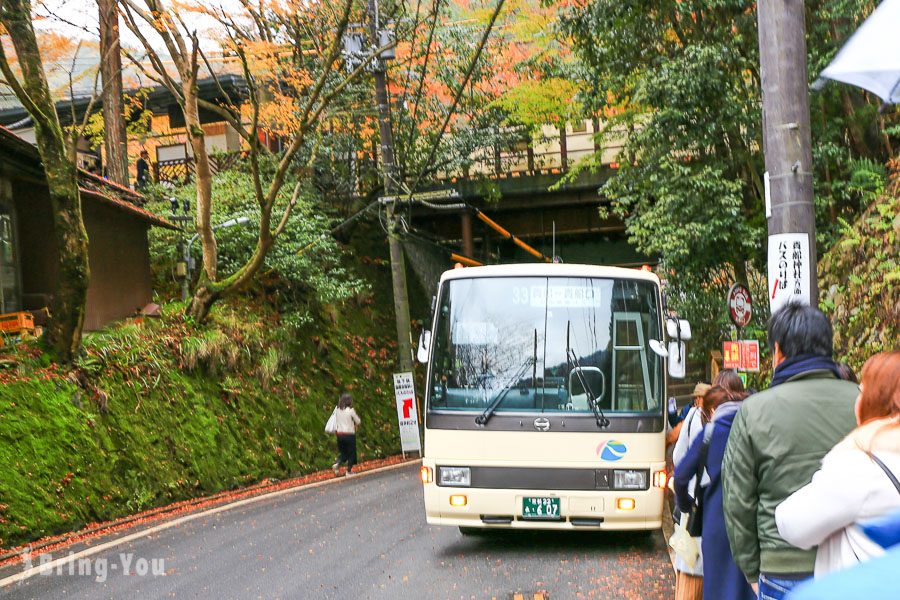
Things to Do in Kifune-jinja Shrine
A Scenic Stroll to the Entrance of Kifune-jinja Shrine: Gleaming Light Poles and Hirobun Restaurant
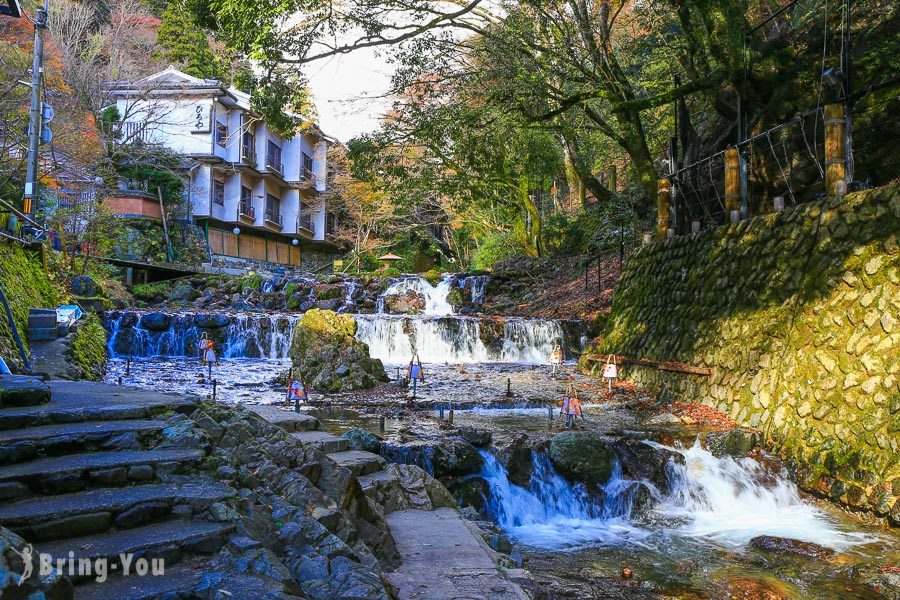
The leisure stroll along the soaring stream is part of the fun. It was such a scenic walk to soak up the peaceful vibe before entering the shrine. The entire road is well shaded with lots of trees flanking from above. If you can clear up your schedule to make space for a trip there in fall around November, the stunning fall foliage gives the pathway a blissful and vivid touch while the dazzling light poles gleam up the street at night.
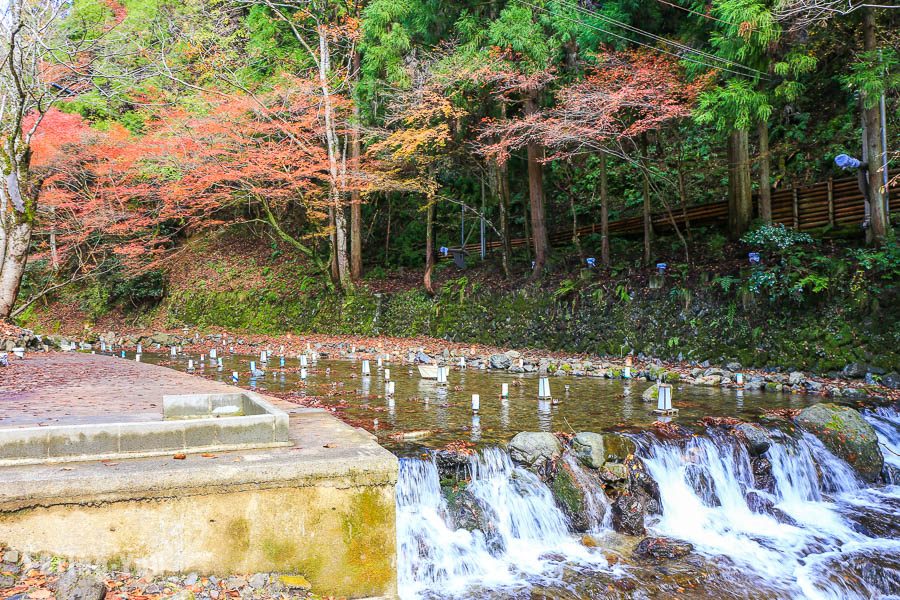
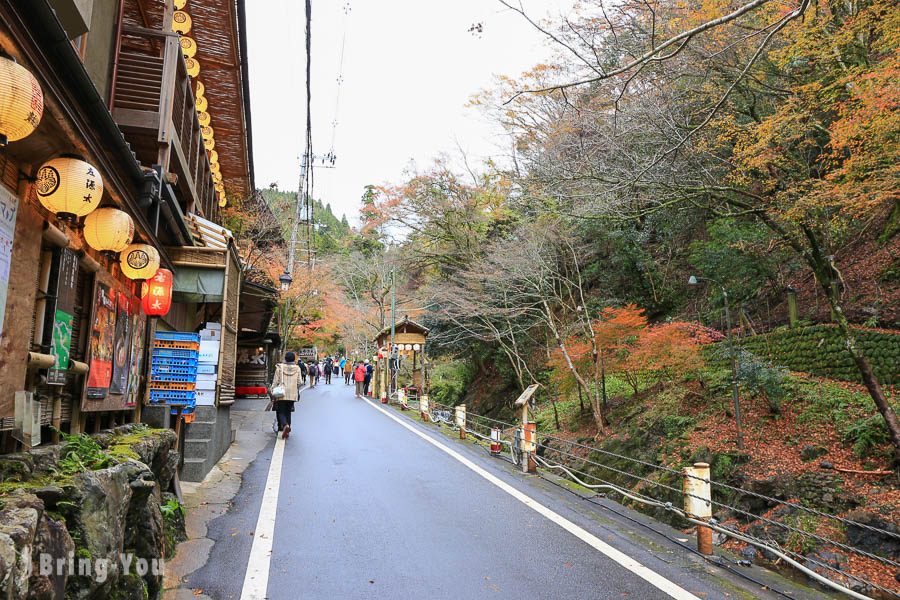
Along this lovely cobbled pathway, you’ll see a lot of restaurants where you can lounge back to rest your tired bones and recharge with a stellar meal. Out of many dining spots up there, Hirobun is definitely the star of the show. During the steamy summer months from June to September, Hirobun becomes a perfect outing idea to revive and beat the heat.
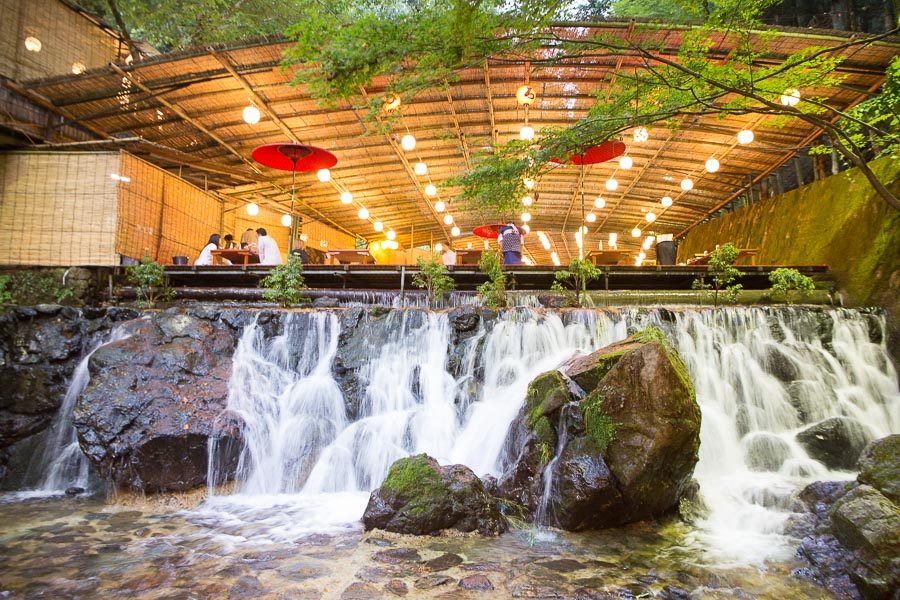
It’s basically a covered restaurant perched atop a cascading mountain stream which is known as kawadoko in Japanese. They serve up some quirky chilled noodles that whizz down the icy water rushing on a bamboo tube.
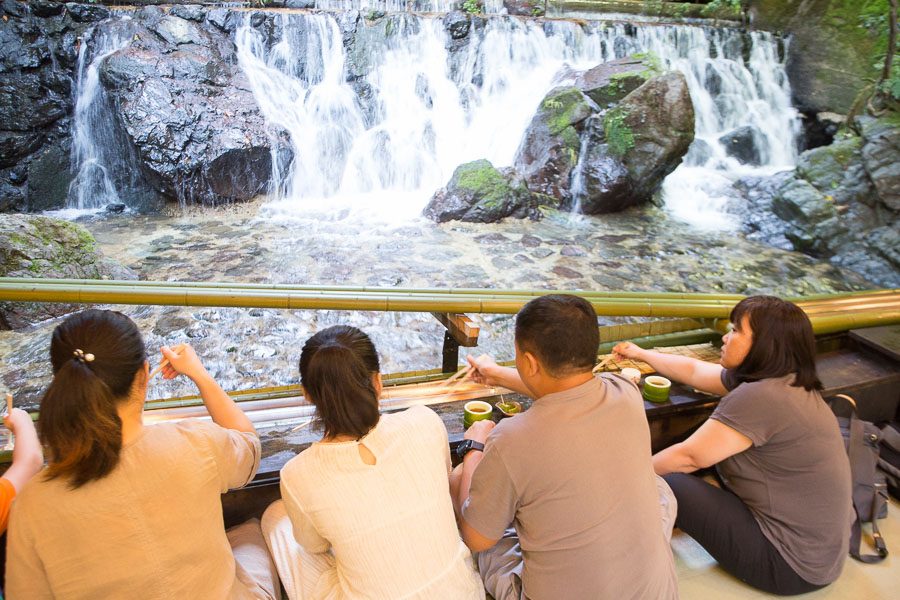
This incredible lunch-ing idea is a big hook for lots of tourists, couples, and families who wanna engage in a midday chat on an elevated seat. You’ll be sitting around a low table on a tatami mat, trying to work your fingers and wield your chopsticks to catch that “gliding” somen!
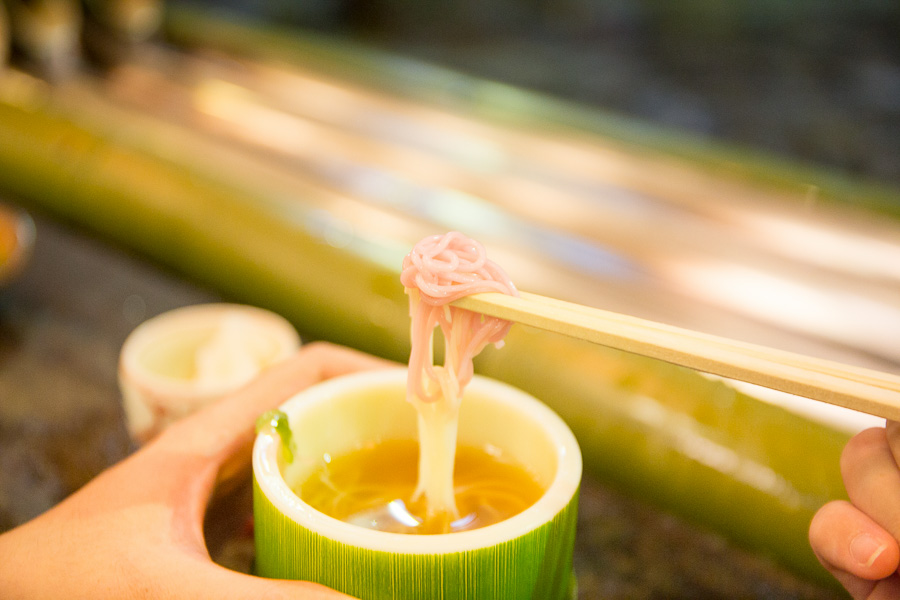
The Red Torii Gate: A Beautiful Entrance to Spruce up Your Instagram
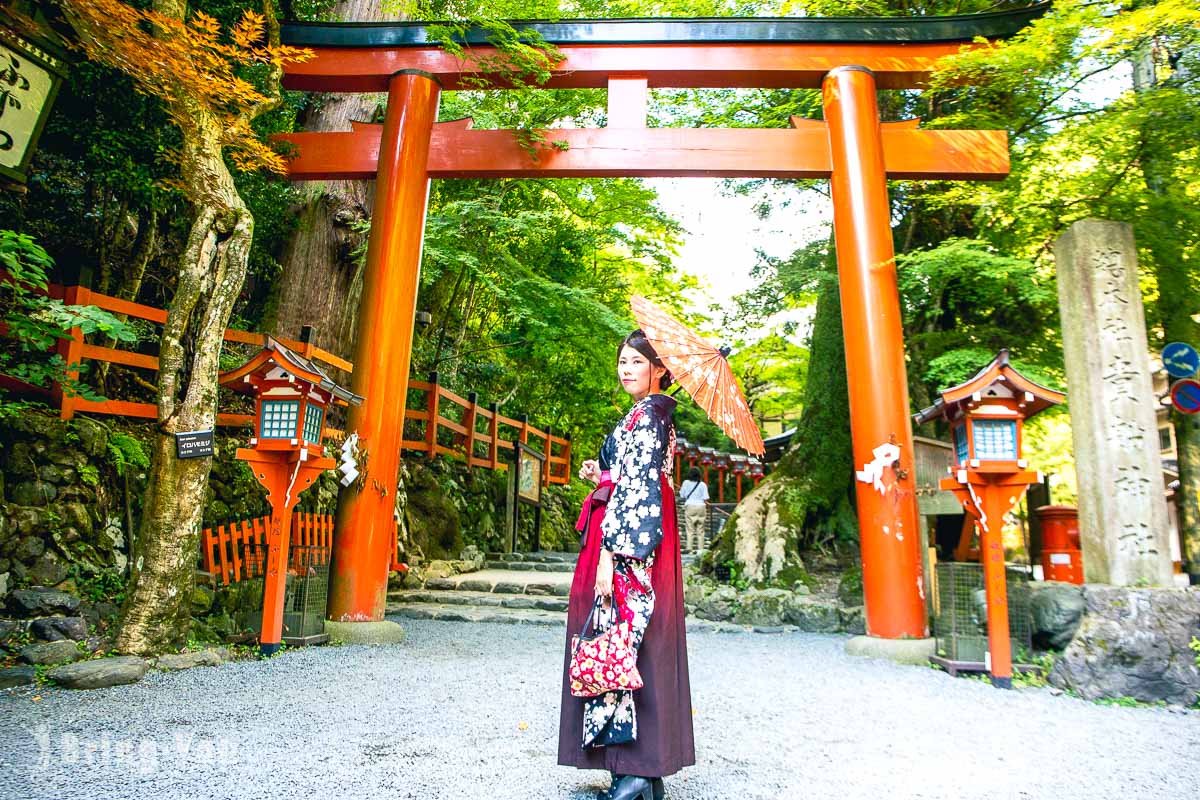
As mentioned above, after you get off the bus at the Kifune Station and walk for a few minutes along a small stream, you will see a red Torii gate and the entrance of Kifune-jinja Shrine.
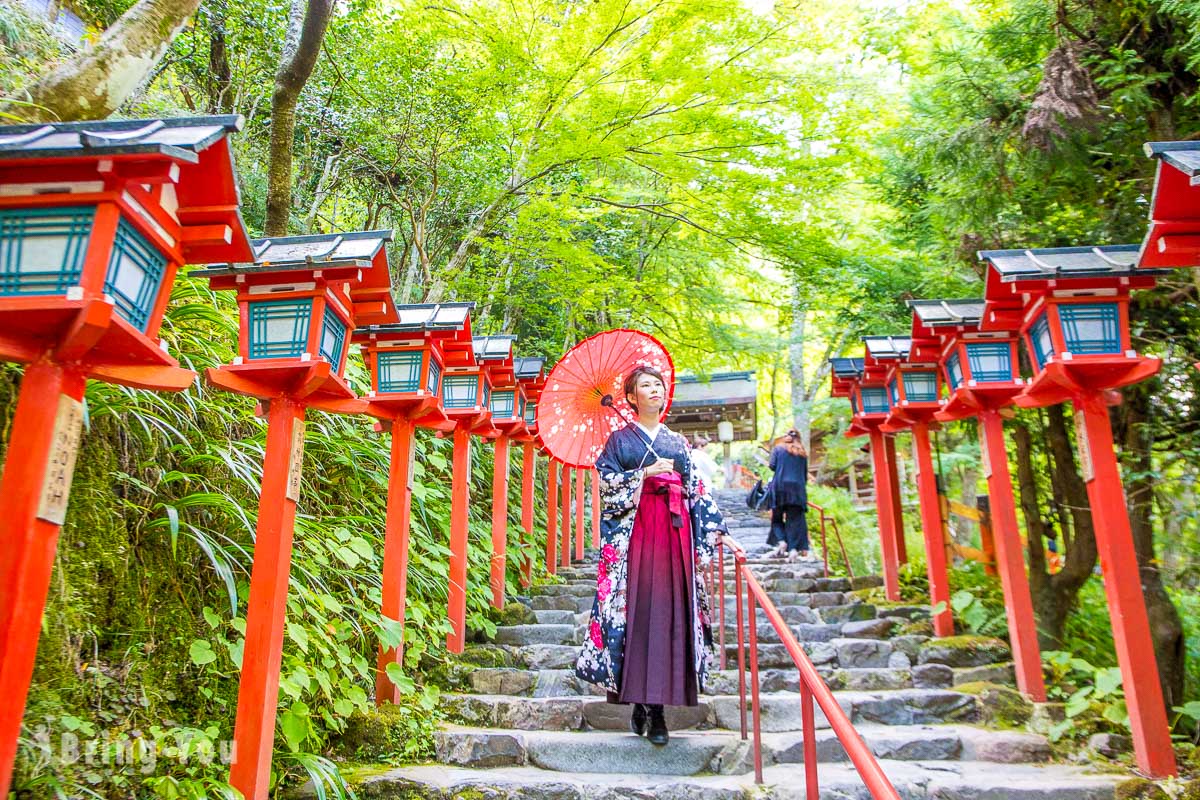
The red torii gate teams up with the stairs to become a popular photo opt itself. The beauty of this Torii gate varies depending on which season you come. This is because the greenery around the gate fluctuates by season. And as mentioned, the fall foliage in autumn gives the scene its finest charm.
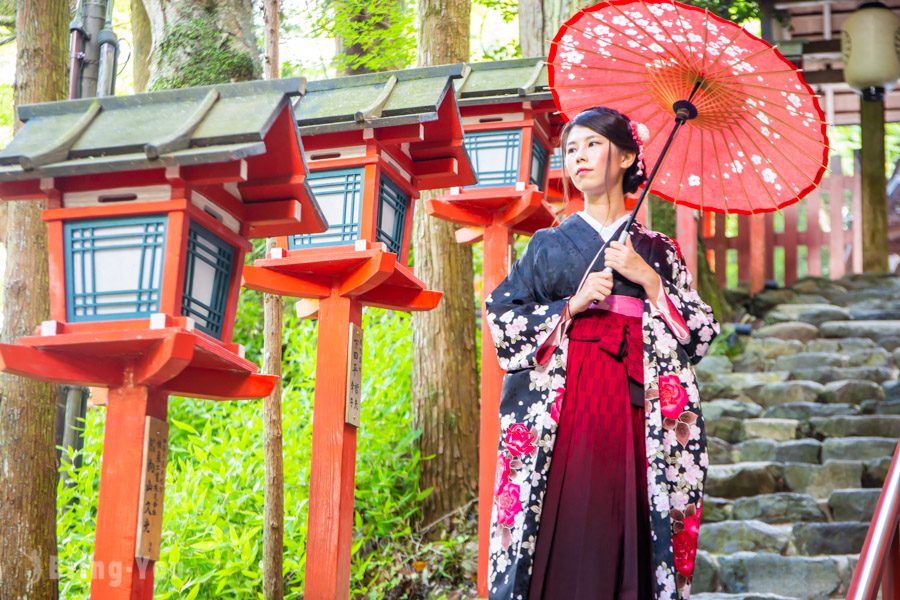
When winter comes during January and February, the stairway becomes a Pinterest-ready destination itself. They light up the entire stairway when the sun beams down after it snows, resulting in a mystical winter wonderland that you don’t want to miss. The thing is you can’t predict exactly when it’s gonna snow. Most of the time, they only update the lighting schedule on the day it snows. That means you’ve gotta keep a close eye on the lighting schedule posted online to plan your visit accordingly.
The Three Praying Halls on the Shrine Ground
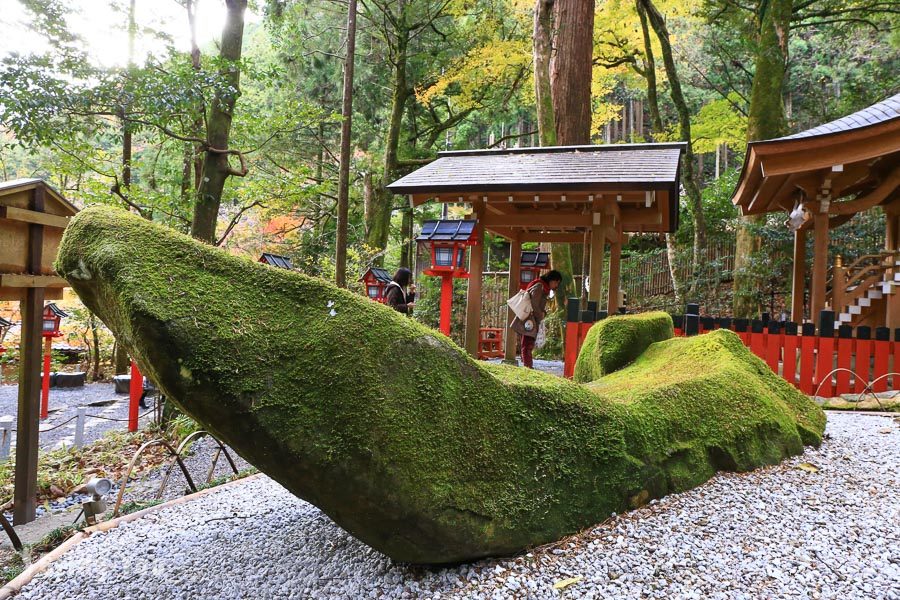
Once you pass through the gate, there are three prayer halls that line up in order to complete your praying process.
The first hall is the main shrine called “Honmiya“. It enshrines the deity of water, Takaokami-no-kami with the typical architecture of a traditional shrine.
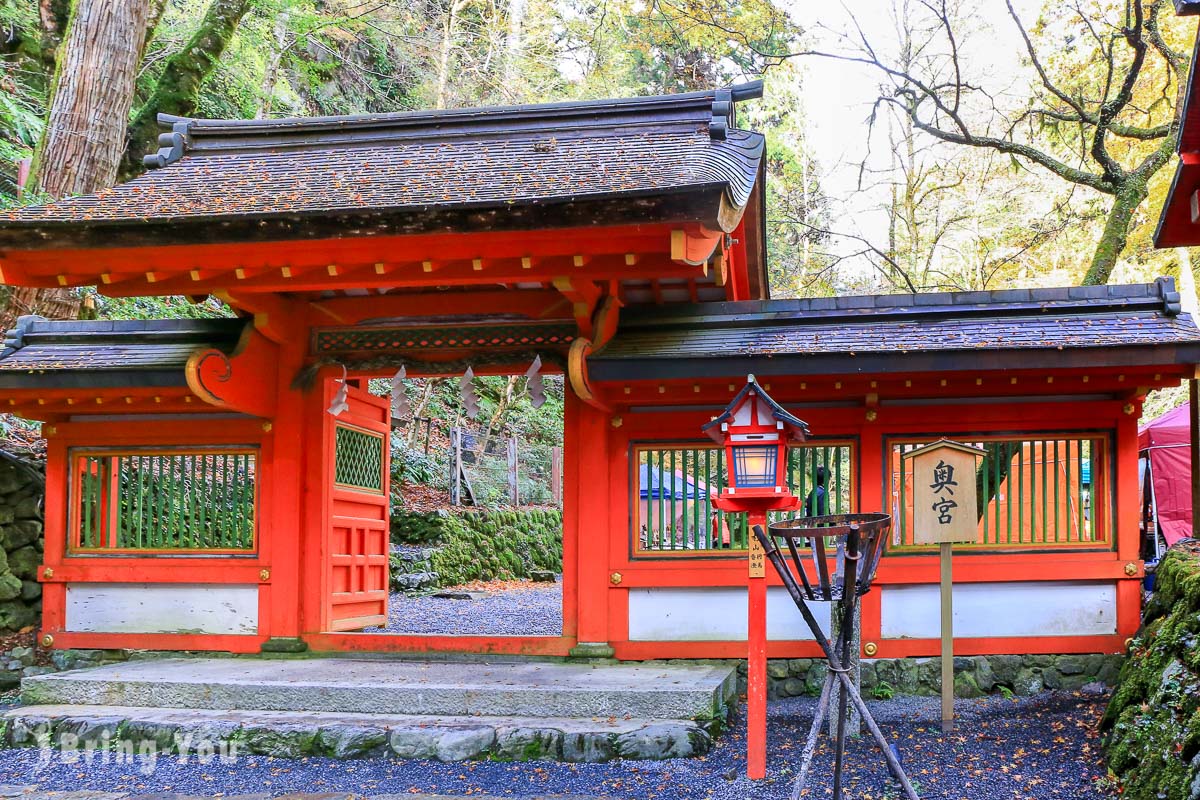
Next up, you will see the second shrine called “Okumiya“. “Okumiya” is about five minutes walking away from the first shrine and serves the same worshipping purpose. Legend has it that Okumiya is the holiest one out of the three prayer halls.
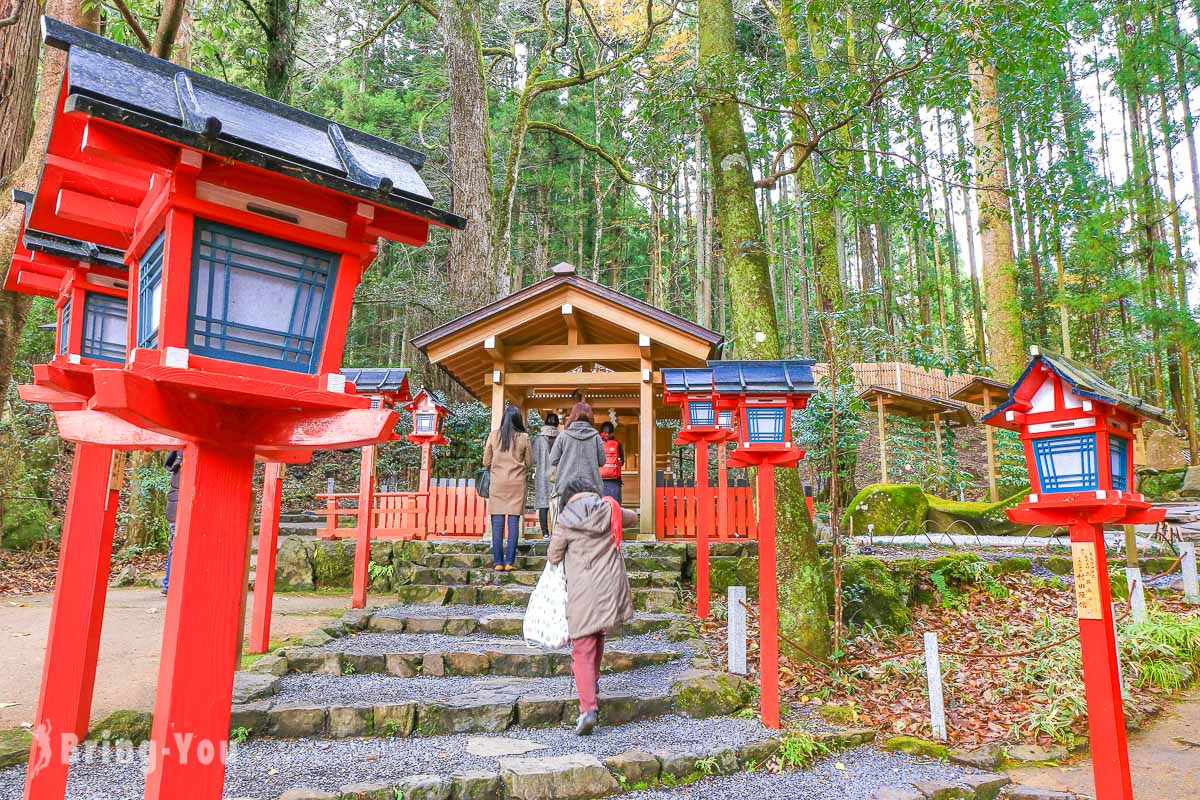
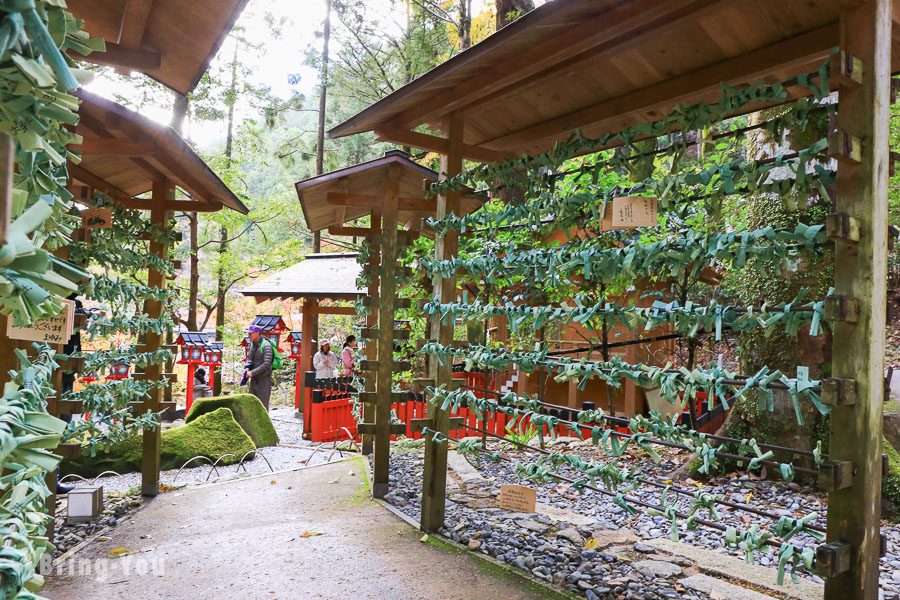
Finally, we have “Yui-no-yashiro” located in between the Honmiya and Okumiya. This is the third hall worshipping Iwanaga-no-himemikoto, a Japanese matchmaking deity taking over the relationships between lovers and friends, and creating opportunities.
Final Words
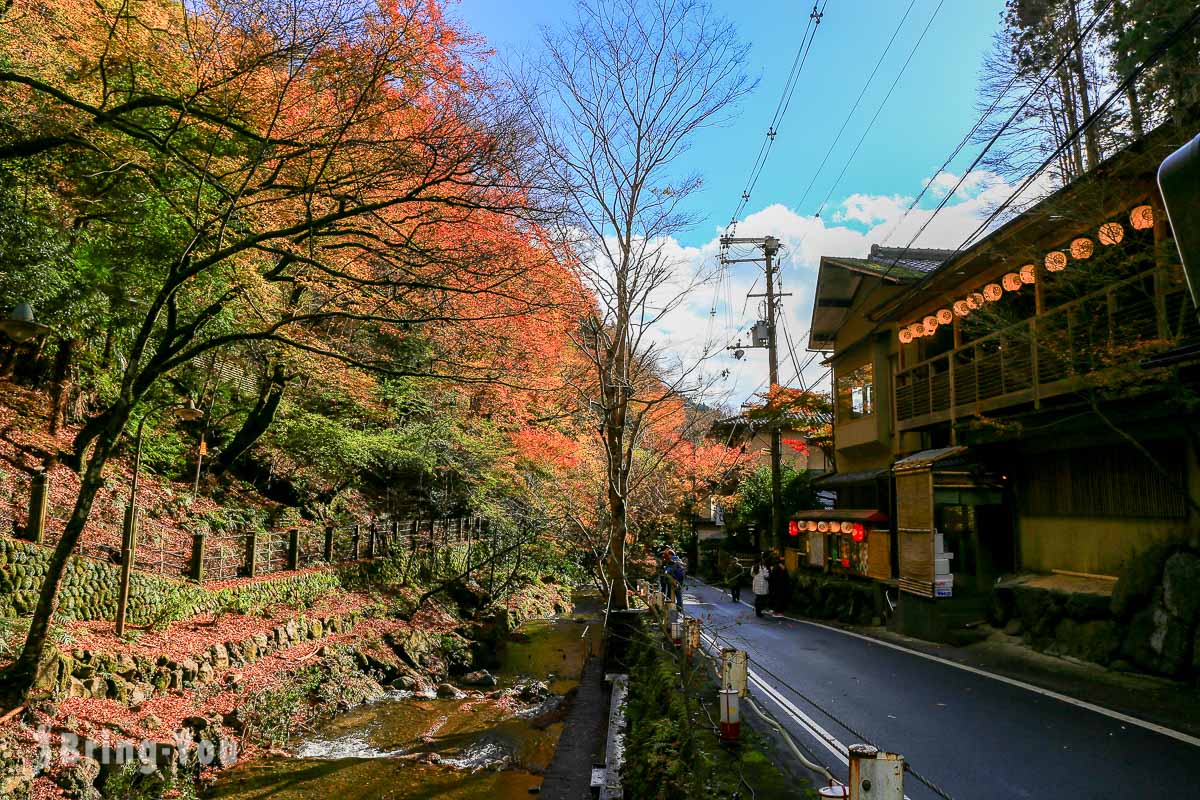
Kifune-jinja Shrine is a lovely getaway to gain a closer look at Japanese culture and be one with nature. Regardless of your religion’s background, it’s a great place to experience a spiritual journey like a local Japanese. No matter which season you are in Kyoto, Kifune-jinja Shrine is totally worth your time to stop by for divination!
